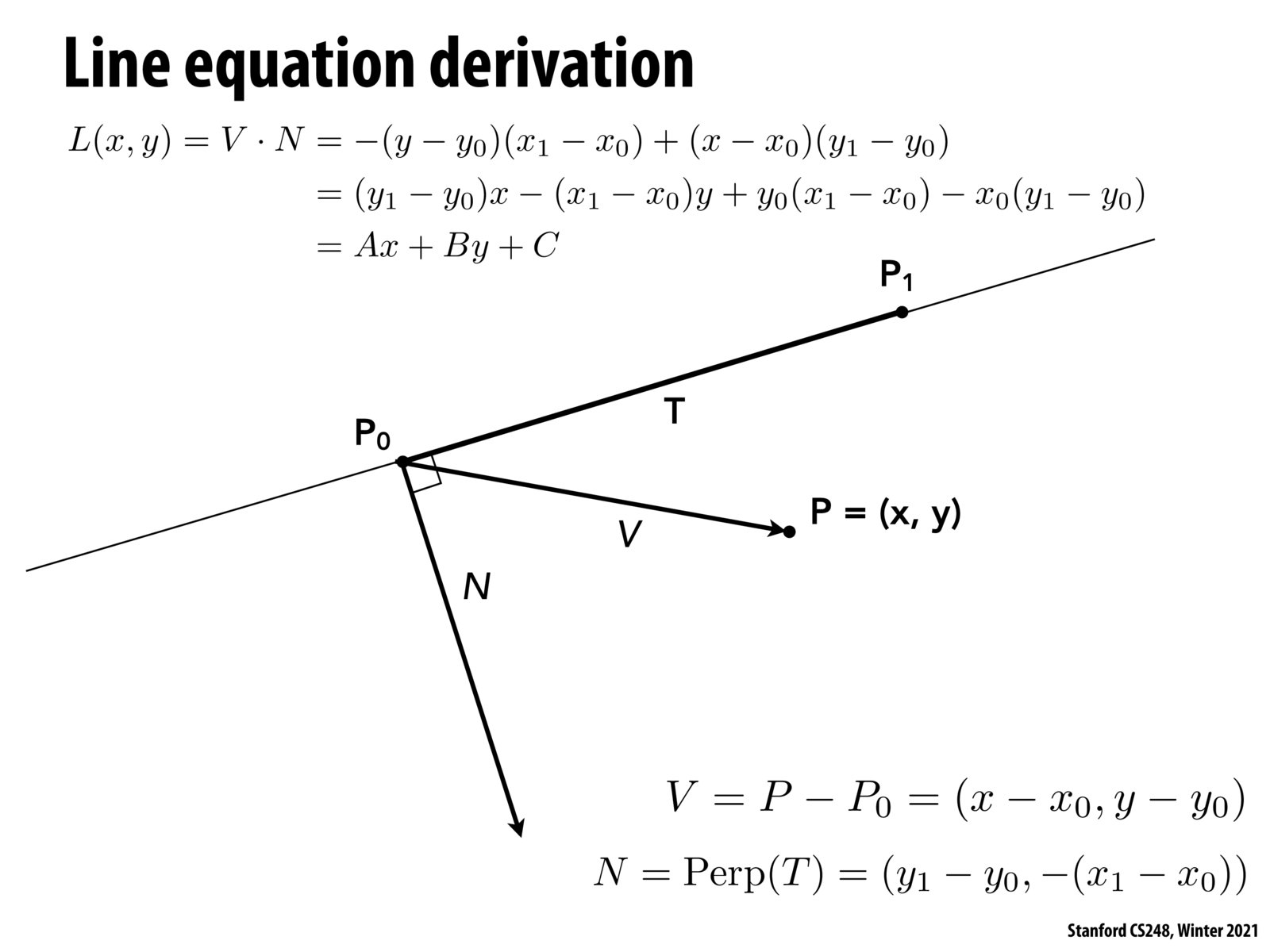

@tgale. Notice that the definition of V indeed has that translation in it. V is the vector from P to some point on the line, in this case P_0. Since L(x,y) = V dot N, the equation for L(x,y) has that baked into it.

Ahh I'd missed that, thank you! IIUC, it doesn't matter what point on the line you use for this translation, correct?
@tgale -- I'll push it back to you. Will the sign of N dot V change for any choice of P_0 used to define V = P - P_0?

As long as P_0 lies on the line, no.
(P - P_0) dot N = P dot N - P_0 dot N
P_0 dot N == 0 (i.e., P_0 lies on the line by definition)
Therefore, the sign will not change.
Now I'm a little confused about needing a P_0 at all though, since that term is always zero... :)

(I know that this is the case - I tried both on the homework and one clearly does not work. Geometrically I see why you need to do this but algebraically I'm not seeing it)

Sorry, ignore my bogus expressions above. Intuitively the conclusion is true because translations are distance preserving so subtracting by a point on a line cannot move a point to the other side of the line (or on top of it). Going to play around with the math a little more
Please log in to leave a comment.
One thing I'm a little confused about is doing the negative-side/positive-side tests once you've calculated the normal vector. It seems to me that you need to translate any point you want to test towards the origin by a point on the line you're testing against? Is there a better way to do this?